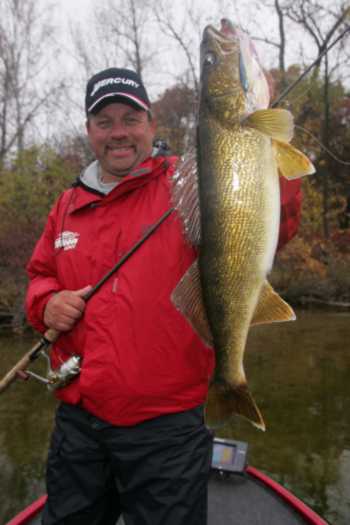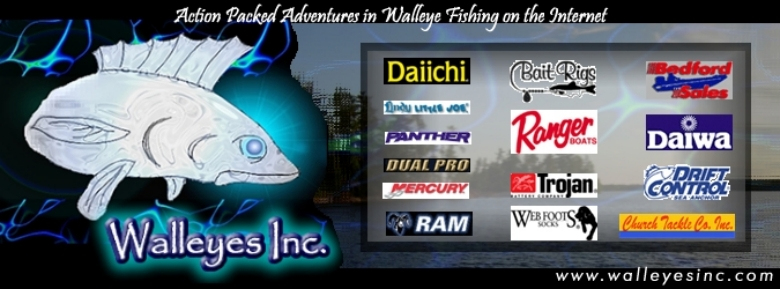| Long before we had side-scanning sonar,
high-tech global positioning units and modern bow-mount trolling
motors, structure fishing was largely a guessing game. It
consisted primarily of exploring what was visible to the naked
eye or using a system of shore marks to triangulate a particular
area or element. And although there were anglers who consistently
put big catches in their boats, there were just as many who
drifted aimlessly hoping to hook up.
 |
Drift-fishing remains one of the most
productive ways to target a variety of species, especially
during the spring months when the fish are active, hungry
and frequent visitors to shallow water. It's one of
the
simplest, yet deadliest methods of fishing. The difference
is that today's anglers are better equipped to fish
efficiently and effectively while using the same basic
strategies as our grandparents. There are virtually
no limits to what can be done while drifting whether
the location is a local river or a body of water the
size
of the Great Lakes.
Pick your presentation - jigs, rigs, bobbers or cranks
- and there's a way to make it work with the tools we
have at our disposal today. And one of the best things
about drift fishing is that you can do it
effectively from an innertube, canoe or kayak to a pontoon,
flat-bottom or a larger boat. |
The fundamentals of drift-fishing begin with location. It's
all about structure this time of year, and that means wind-blown
shorelines, breaklines, weed edges, reefs, rockpiles or humps
on our lakes and
reservoirs. The wind is an important factor because is stirs
up the shallow water and makes it easy for predator species
like walleyes, pike and bass to feed. Choose structure or
shorelines the wind is blowing into rather than away from,
and if there isn't much wind, target the areas it was most
recently blowing into.
In our river systems, drift-fishing typically means sandbars,
current breaks, the tips of wingdams and defined breaklines.
Two of my favorite drifting presentations are jigging and
rigging. It's hard to beat a jig and minnow in May on many
bodies of water. Choose a heavy enough jig to allow you to
keep a 45-degree angle in your line. When you lower your rod
tip toward the water, you should be able to
feel your jig hit bottom. If not, let out more line or go
to a heavier jig. Tip it with whatever the bait of choice
is on a particular body of water. In some lakes and reservoirs,
it might be shiners or chubs. In
others, it might be fathead minnows or crawlers. One of the
things I like most about jig fishing is the versatility it
allows. Try a slow lift and drop presentation as you drift
along. Try snapping your jig. If you have more than one angler
in the boat, experiment until you find what works. The fish
will usually tell you how they want it. Sudden changes to
a fish's environment may dictate approaches with more finesse.
I've seen situations (usually in water shallower than 10 feet)
where long-lining a lighter jig was the most productive. I've
also seen situations where cold fronts or changes in water
levels or clarity put walleyes in a negative mood where they
would only respond to a jig dragging lifelessly along the
bottom. That's when changing to a stand-up style of jig head
can also pay off. I put my rods in my Tempress rod
holders and sit back. There's no hard and fast rule regarding
hook sets. It depends on how fast your are drifting, but also
on the mood of the fish. If I'm jigging at a 45-degree angle
with a fairly heavy jig like a 3/8th or 1/2-ounce and a hit
occurs on the drop, I usually set the hook immediately. If
I'm long-lining or dragging, I usually let my rod tip back
as far as I can toward the fish before driving the hook home.
Live-baiting is another presentation I enjoy. I like the hands-on
qualities of feeling a bite, feeding line and setting the
hook. Lindy-rigging is a tried and true method of fishing
everything from minnow species
to leeches and crawlers. My basic set-up consists of a Lindy
No-Snagg sinker followed by a barrel swivel and a six-foot
leader with a colored bait hook, although I'll extend my leader
length longer in especially clear water or when I'm not getting
bit as often as I think I should with the shorter length.
If there is moss or vegetation beginning to grow on the bottom,
Lindy's floating jig heads will keep your bait clean and in
the strike zone. Hooksets can be a little tricker with live-bait
rigs. I usually keep a
finger on my line and the bail open so I can let the fish
run when I feel a hit. It may take a few bites to determine
when to set the hook. Every day is different. Sometimes, it's
as easy as reaching back as far
as you can with your rod before reacting. I've also encountered
situations where I've let fish go for 20 or 30 seconds. As
with any method of fishing where the angler has a rod in hand,
the quality of your rod and your choice of line are important
to detecting bites and landing fish. I like a 7-foot graphite
Quantum rod equipped with a Zebco spinning reel spooled with
Yo-Zuri Hybrid line that gives me just enough stretch forgiveness
so I don't rip the hook free when the wind is moving me along.
Whether you are fishing jigs or rigs, I'm a firm believer
in settingthe hook with an up-stroke rather than a sideways,
sweeping action. I
want to do whatever I can to bury the point in the roof of
a fish's mouth. A horizontal hookset can result in pulling
the bait out of the fish's mouth or in a precarious lodging
of the hook in the corner of an angry
fish's mouth where it can easily rip free. While jigging and
rigging are the two most common methods of
drift-fishing, it's also possible to fish crankbaits and spinner
rigs. During my walleye fishing experiences, I've had success
using a slow-rolling crank like an Original Rapala or a spinner-and-crawler
rig fished
behind a bottom bouncer. I've also encountered numerous situations
on the Great Lakes I've been on a trolling bite using Off-Shore
planer boards when big, rolling waves have pushed me along
fast enough to shut down my Mercury kicker or MinnKota bow-mount
and be even more effective. Regardless of your presentation,
your ability to repeat your drifts is critical to sustained
success. That's where my Humminbird sonar and GPS are invaluable.
First, I can drop waypoints or icons at my starting point.
Then, as I drift along a breakline, shoreline or piece of
structure, I can pinpoint productive depths and repeat the
pass by following my GPS trail or a line of waypoints. Without
that precision, it's easy to miss a target area by 30 or 40
feet and miss fish that might be holding tight to a transition
on the bottom or a certain depth on a break. Drift-fishing
has been around forever, and for good reason. It's simple
and it works. And these days, anglers are more proficient
at it than ever. Keep it in mind the next time you hit the
water. When it comes tocatching springtime fish, easy often
does it.
|

